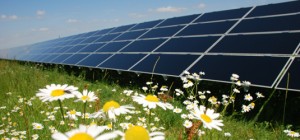
Photo taken from: PV Magazine
While adoption of photovoltaics into our current energy infrastructure can significantly diminish our carbon footprint, an understanding of the environmental impacts associated with the production, installation, and disposal of PV panels is crucial. How these impacts translate to human health impacts is also important.
Environmental Concerns Include:
- Release of Toxic Material During Production or End-of-Life Disposal Resulting in Soil, Groundwater, and Even Air Pollution
- Impacts on Ecosystem Derived from Land-Use Practices
- Depletion of Natural Resources
- Direct Human Health Impacts during Manufacturing or Installation
- Release of GHG Can Contribute to Anthropogenic Climate Change
Many of these concerns are dependent upon methods of production and disposal. For example, the electricity mix used to generate panels is capable of completely eliminating the carbon footprint associated with manufacturing.
Materials used for Photovoltaic Panels:
Waste associated with polysilicon crystalline panels include hydroflouric or hydrochloric acid used for chemical etching, and the increased production of thin film technology is eliminating the need for these harmful chemicals. One problem, however, is that most thin-film panels use metals such as cadmium, which are harmful unless recycled. [2]Author: Kevin Jackson
Editor: Hannah Goldstein
Sources:
[1] California energy Commission. (2003). Potential Health and Environmental Impacts Associated with the Manufacture and Use of Photovoltaic Cells, EPRI, Palo Alto, CA, and California Energy Commission, Sacramento, CA
[2] Mulvaney, D., (2014). Solar Energy Isn’t Always as Green as You Think.
![Availability of metals necessary for specific PV panels [2]](http://sites.lafayette.edu/egrs352-sp15-pv/files/2015/05/Screen-Shot-2015-05-04-at-10.12.36-PM-300x177.png)
![DOT hazard classification of chemicals used in PV module manufacturing [1]](https://sites.lafayette.edu/egrs352-sp15-pv/files/2015/05/Screen-Shot-2015-05-06-at-1.57.56-PM-204x300.png)